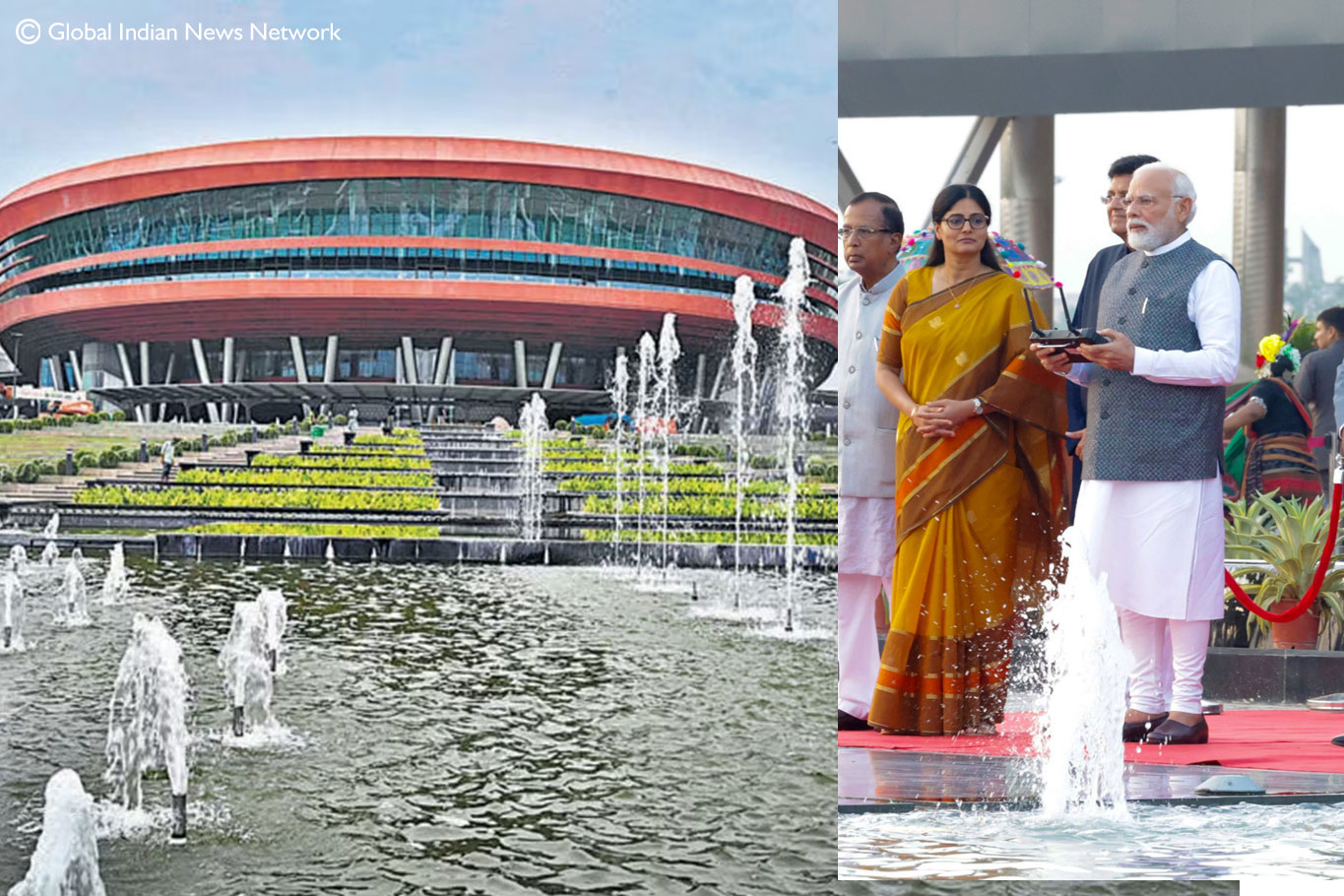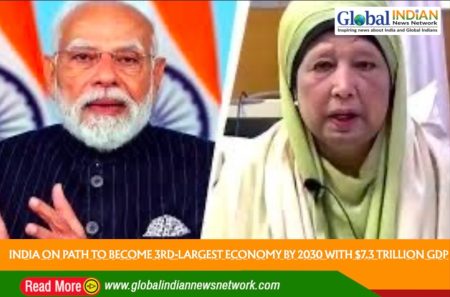 Prime Minister Mr. Narendra Modi inaugurated the International Exhibition-cum-Convention Centre (IECC) complex, named ‘Bharat Mandalam,’ at Pragati Maidan in New Delhi. During the grand opening, the Prime Minister also unveiled the G-20 coin and stamp and participated in the naming of the Convention Centre. The IECC, constructed as a national project at a cost of approximately US$ 329.17 million (Rs 2,700 crore), aims to promote India as a global economic destination. Mr. Modi performed a puja at the Complex and honored the Shramjeevis (workers) involved in its construction.
Prime Minister Mr. Narendra Modi inaugurated the International Exhibition-cum-Convention Centre (IECC) complex, named ‘Bharat Mandalam,’ at Pragati Maidan in New Delhi. During the grand opening, the Prime Minister also unveiled the G-20 coin and stamp and participated in the naming of the Convention Centre. The IECC, constructed as a national project at a cost of approximately US$ 329.17 million (Rs 2,700 crore), aims to promote India as a global economic destination. Mr. Modi performed a puja at the Complex and honored the Shramjeevis (workers) involved in its construction.
Mr. Piyush Goyal, the Union Minister of Commerce & Industry, Consumer Affairs, Food & Public Distribution, and Textiles, praised Prime Minister Modi for inspiring the nation to think big and strive towards becoming a developed nation. He emphasized the significance of the Shramjeevis and architects in building the complex. Establishing a world-class convention and exposition centre in the country, according to him, would showcase India to the world and complement the government’s efforts to boost business and ensure progress with modern infrastructure.
The name ‘Bharat Mandapam’ is inspired by Lord Basaveshwara’s concept of ‘Anubhav Mandapam,’ a pavilion for public festivities. This complex, open to the public, is equipped with all the necessary amenities to help India achieve its goal of becoming a developed and contemporary nation.
The IECC project is India’s largest Meetings, Incentives, Conferences, and Exhibitions (MICE) destination. The Convention Centre, at the heart of the Pragati Maidan complex, is a magnificent architectural masterpiece designed to host large-scale international exhibits, trade fairs, conventions, conferences, and other prominent events. Its multi-purpose hall and plenary hall can accommodate up to 7,000 people, surpassing the seating capacity of Australia’s iconic Sydney Opera House. Additionally, the Centre features a stunning Amphitheatre with seating for 3,000 people.
The Convention Centre’s architectural design is derived from the shape of a Shankha (conch shell), and its walls and facades showcase elements of India’s traditional art and culture, including representations of ‘Surya Shakti’ highlighting India’s advancements in solar energy, ‘Zero to ISRO’ celebrating space achievements, and Pancha Mahabhuta symbolizing the building blocks of the universe – Aakash (Sky), Vayu (Air), Agni (Fire). The venue is adorned with paintings and tribal art from different parts of the country.












